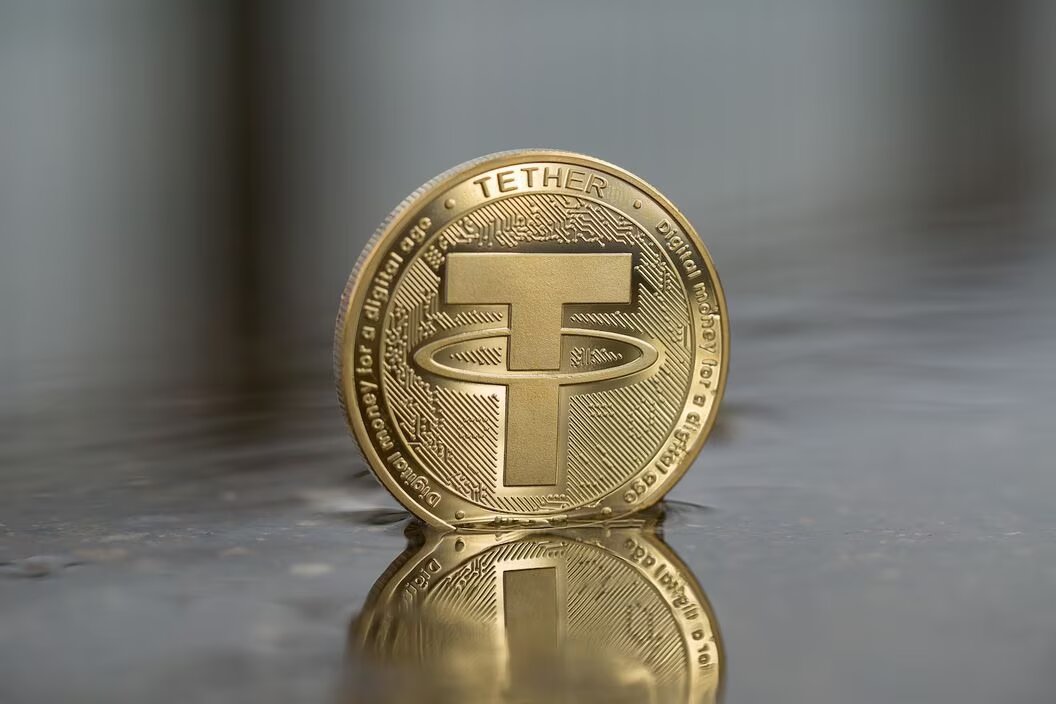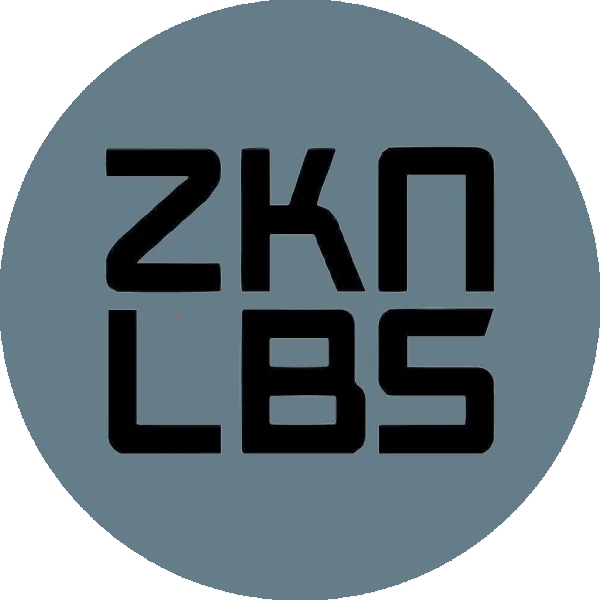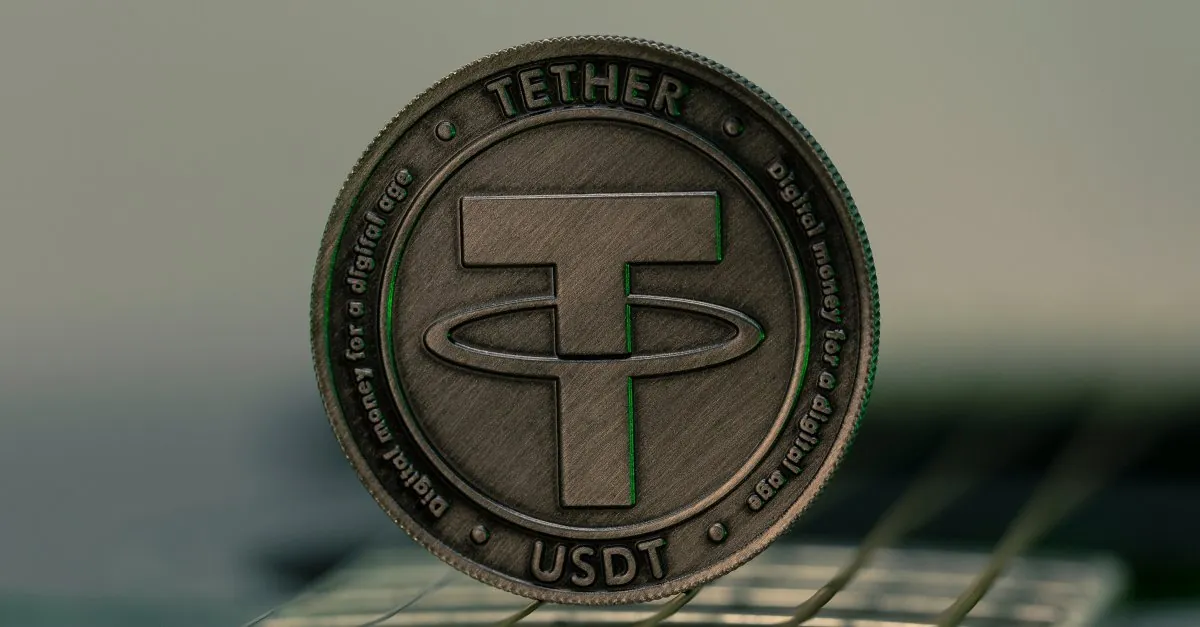What is USDT?
In the ever-evolving world of cryptocurrencies, USDT has emerged as one of the most prominent and widely used digital assets. USDT stands for "Tether" - a term significant in crypto trading and investment. But what exactly is USDT, and why has it garnered such attention in the cryptocurrency market? What does USDT stand for? USDT, as the name suggests, is a stablecoin, and it plays a crucial role in stabilizing the volatility often associated with other cryptocurrencies like Bitcoin and Ethereum. Created by Tether Limited, a company that operates in the blockchain space, USDT was first introduced in 2014. Unlike traditional cryptocurrencies that experience wild price fluctuations, USDT is designed to maintain a stable value by pegged to a fiat currency reserve, typically the US Dollar (USD). The primary purpose of USDT is to provide traders and investors with a secure and reliable means of moving funds in and out of cryptocurrencies without the need to convert back to fiat currency. This characteristic makes USDT a popular choice for those seeking a haven during market uncertainty or for individuals aiming to maximize profits without completely exiting the crypto space.
Tether Limited, the entity behind USDT, claims to maintain a one-to-one ratio between the USDT tokens in circulation and the fiat reserves held in their accounts. It ensures that each USDT is backed by an equivalent amount of real-world currency, adding a layer of stability and confidence for users. Moreover, USDT is widely supported by cryptocurrency exchanges, wallets, and various platforms, making it easily accessible to traders and investors across the globe. Its extensive adoption has further contributed to its status as a preferred digital asset for many market participants. While USDT offers undeniable advantages, it has not been without its share of controversies. Concerns have been raised about the transparency of Tether Limited's reserve holdings, and there have been allegations that the company did not always have the total fiat reserves to back all USDT in circulation. Such controversies have led to regulatory scrutiny and investigations in the past. Despite these challenges, USDT has retained its popularity and remains a crucial player in the cryptocurrency ecosystem. As we delve deeper into the world of USDT, we will explore its acronym, dissecting the components that make up its name and understanding its significance in the ever-changing landscape of digital currencies. We will dive further into the details of USDT, shedding light on its use cases, impact on the crypto market, and potential challenges. So, let's continue our exploration of USDT and gain a comprehensive understanding of this essential stablecoin and its role in the fascinating world of cryptocurrencies.
Unraveling the Acronym: What Does USDT Stand For?
Now that we have a basic understanding of USDT, let's delve into the acronym to unravel its meaning and significance within cryptocurrency.
USDT Expansion: Tether's Stablecoin
What does USDT stand for? The acronym, "USDT," stands for " US Dollar Tether," which is the name of the stablecoin. As mentioned earlier, stablecoins are a category of cryptocurrencies designed to maintain a stable value by pegging their worth to a reserve of assets, such as fiat currencies or commodities. Tether, the issuer of USDT, aims to achieve stability by anchoring its value to the US Dollar.
The Tether Connection: Who Are They?
Tether Limited, the company behind USDT, is a prominent player in the cryptocurrency industry. Founded in 2014, Tether Limited initially operated under "Realcoin" before rebranding as "Tether." The team behind Tether includes experienced professionals in blockchain technology, finance, and legal compliance. Their mission was to address the need for a stable digital asset to facilitate transactions and reduce the impact of price fluctuations associated with other cryptocurrencies.
Tether's Role in Crypto Transactions
USDT plays a pivotal role in facilitating transactions within the cryptocurrency market. Traders and investors often use USDT as a medium of exchange and a store of value. When volatility strikes the crypto market, traders can quickly convert their holdings into USDT to avoid potential losses. This process is often called "parking" or "hedging" funds in USDT. Moreover, USDT is a liquidity bridge, allowing users to move in and out of other cryptocurrencies without converting to fiat currency, such as USD. This feature has proven invaluable, providing stability in an otherwise highly volatile market.
The Stablecoin Concept: Backed by Fiat Reserves
Unlike many cryptocurrencies, whose value is solely determined by supply and demand dynamics, USDT maintains stability by pegged to a fiat currency reserve. Tether Limited claims that for every USDT in circulation, an equivalent amount of US Dollars is held in reserve. This assurance is intended to give users confidence that their USDT holdings' value will remain stable and secure.
Advantages and Disadvantages of Using USDT
USDT's stability and liquidity have undoubtedly contributed to its widespread adoption and popularity. Traders and investors appreciate the ability to escape market turbulence by converting their assets to USDT. Additionally, USDT offers a convenient and fast way to move funds between exchanges without going through the traditional banking system. We have also written a blog article on PlasBit related to using a TRC20 USDT wallet on the Tron network; it might be an interesting insight for you to explore this issue further. However, despite its advantages, USDT has faced criticism and controversy. One of the main concerns is the need for complete transparency regarding Tether Limited's fiat reserves. While the company claims to hold sufficient reserves, some skeptics have questioned this assertion, and audits of their reserves have been a topic of debate in the crypto community.
The Use Cases of USDT

We uncovered the meaning and significance of USDT and explored the fundamentals behind Tether's stablecoin. Now, let's delve into the various use cases of USDT and understand how it is utilized within the cryptocurrency ecosystem. In PlasBit's ecosystem, we already address this topic multiple times, as we are constantly delving into topics related to cryptocurrency trading and Web3 on the blog and our social channels of Twitter and Telegram, and we invite you to delve into other articles to increase your knowledge and make more informed decisions.
USDT's Role in Trading and Investment
What does USDT stand for, and what are its use cases? One of the primary use cases of USDT is its role in cryptocurrency trading and investment. Traders often turn to USDT as a haven during high market volatility. When they anticipate a downturn in the crypto market, they can quickly convert their holdings into USDT to preserve their value and avoid potential losses. This practice is known as "tethering" or "hedging." Furthermore, USDT is extensively used as a trading pair on cryptocurrency exchanges. Many altcoins and tokens are commonly paired with USDT, providing liquidity and enabling seamless trading between cryptocurrencies without needing direct fiat currency conversion.
Mitigating Crypto Market Volatility with USDT
The cryptocurrency market is infamous for its extreme price swings and bubbles. Asset volatility can result in periods of extreme market positivity, which can result in bubbles, in the case of cryptos: crypto bubbles. While this characteristic can appeal to some investors seeking substantial gains, it can also be risky. USDT offers a stable alternative, allowing users to hold their assets in a stable form to reduce their exposure to the market's fluctuations.
USDT as a Bridge for Fiat Currency Conversion
USDT serves as a bridge between the crypto and fiat worlds. When traders want to exit their cryptocurrency positions and move back into traditional fiat currencies, they can easily do so by converting their USDT holdings to an exchange. This process allows for more rapid and efficient fiat currency transfers, enabling users to access their funds without the delays associated with traditional banking systems. With PlasBit exchange, you can easily operate with all the cryptocurrencies you need. With our guides, tools, and security, you can enjoy the crypto experience with knowledge and without problems.
USDT in DeFi (Decentralized Finance) Applications
The rise of decentralized finance (DeFi) has introduced new and innovative use cases for USDT. DeFi platforms offer various financial services, such as lending, borrowing, and yield farming, all powered by smart contracts on blockchain networks. USDT is a popular choice for participants in DeFi protocols due to its stability and wide acceptance. Liquidity providers on decentralized exchanges (DEXs) often use USDT to provide liquidity to various trading pairs, earning rewards in return. Additionally, users seeking to participate in decentralized lending and borrowing protocols can use USDT as collateral to access loans or make interest on their holdings.
Regulatory and Controversial Aspects of USDT
While USDT's utility and convenience have propelled its widespread adoption, the stablecoin has not been without its fair share of controversies. One main concern surrounding USDT is the transparency of Tether Limited's reserve holdings. The company has faced scrutiny over the years, with some critics questioning whether they possess enough fiat reserves to back all USDT in circulation. Regulators like SEC are also keenly interested in USDT, especially given its significant role in cryptocurrency. The stablecoin's potential impact on market stability and investor protection has led to increased regulatory oversight and calls for greater transparency and accountability from Tether Limited.
The Future of USDT and its Competitors
As USDT continues to hold its position as one of the most widely used stablecoins, it faces increasing competition from other stable digital assets.
USDT vs. USDC (USD Coin)
USDC, short for USD Coin, is another popular stablecoin that, like USDT, is pegged to the US Dollar. Launched by the CENTRE consortium, which Circle and Coinbase co-found, USDC is known for its regulatory compliance and transparency. Unlike USDT, USDC undergoes regular audits to verify its fiat reserves, offering users higher assurance. USDT and USDC share similar use cases, acting as a stable store of value and facilitating fiat-to-crypto conversions. However, USDC's emphasis on transparency and compliance has resonated with some users and institutions, especially those seeking a more regulated and audited stablecoin option.
USDT vs. DAI
DAI, a stablecoin created by MakerDAO, operates differently from USDT and USDC. It is a decentralized stablecoin, meaning fiat reserves do not directly back it. Instead, DAI is collateralized by other cryptocurrencies, primarily Ether (ETH), locked into smart contracts on the Ethereum blockchain. The value of DAI is maintained through an algorithmic system that adjusts the collateral requirements based on supply and demand dynamics. This mechanism allows DAI to maintain its peg to the US Dollar, but it also means that its stability is subject to the volatility of the underlying collateral. While DAI provides decentralization and avoids some of the concerns associated with centralized stablecoins like USDT, its value stability relies on the health and resilience of the collateralized assets.
USDT vs. BUSD (Binance USD)
BUSD is the stablecoin issued by Binance, one of the largest cryptocurrency exchanges globally. Similar to USDT and USDC, BUSD is pegged to the US Dollar and offers a stable means of trading and holding value within the Binance ecosystem. BUSD's close association with Binance makes it a convenient option for traders on the platform, allowing for easy conversion between cryptocurrencies and fiat. Moreover, Binance has committed to maintaining transparency and undergoing audits of BUSD's fiat reserves, instilling confidence in its users.
The Competitive Landscape
As the stablecoin market expands, the competition between these digital assets becomes more pronounced. Factors such as regulatory compliance, transparency, technological implementation, and security play essential roles in determining the success and acceptance of stablecoins. USDT's status as a pioneer and its widespread adoption across various exchanges and platforms give it a significant advantage in liquidity and utility. However, increased regulatory scrutiny and the emergence of more transparent alternatives have prompted users to explore other stablecoin options. Soon, we can expect to see the stablecoin landscape evolve, with USDT facing challenges from competitors vying for dominance. We can probably assume that in the future, the most secure stablecoins will be those that become established in the long run. Security is one of the vital elements of the transition from Web2 to Web3. At PlasBit, we have implemented all the best practices to ensure asset security for the platform and users: Join us to trade all the cryptocurrencies you need, including stablecoins and altcoins.
Conclusion
In conclusion, USDT, standing for Tether, has solidified its position as a leading stablecoin in the cryptocurrency market. Its stability and liquidity have made it a preferred choice for traders, investors, and users seeking a reliable bridge between the crypto and fiat worlds. While USDT has faced controversies and competition from other stablecoins, its widespread adoption and strong market presence make it a formidable player in the digital asset space. As the cryptocurrency ecosystem continues to evolve, the role of USDT and its peers will undoubtedly shape the future of finance, offering innovative solutions and possibilities for users worldwide.







